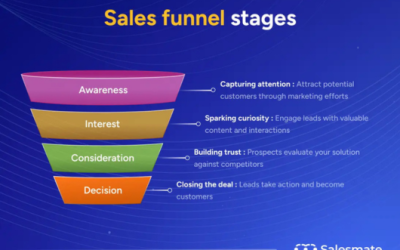Businesses use CRM software to manage, nurture, and grow customer relationships. Businesses can also use their CRM for internal processes and project management. CRMs have robust tools for automation, segmentation, email, and reporting. However, there are times when you may need to take a deep dive into your CRM data to a level that the CRM cannot provide. There are several reasons why you may need to do this:
- Analyze raw data
- Analyze budgets
- Analyze data sets
- Analyze a larger range of data
When you need to analyze your CRM data at this level, Excel may be a good solution. CRMs give you the ability to export your data as an Excel spreadsheet or CSV file which you can open in Excel.
Excel’s functionality is built around data analysis and management. Most of us have used Excel at one time or another to analyze data but stopped short of a deep dive. There are two features in Excel that can help you analyze your data and find the answers that you need.
- Scenario ManagerScenario Manager allows you to compare data side by side and swap sets of data. By doing this, you can create scenarios with different variables and see the result. This is a feature that most CRMs do not have, so it is necessary to take the extra step of exporting your data to create the scenario in Excel to make a better business decision.For example, you would like to figure out ways to improve your marketing and sales process so that you can shorten the sales cycle while closing more sales. You can use Scenario Manager to create scenarios with your sales and marketing data. By doing this, you can identify processes that could be improved or even eliminated.As you create your scenarios, you can store multiple versions of data in the same cell and then compare the results. From there, you can decide the best way to move forward.
If you would like to learn how to use Scenario Manager, go here for our tutorial.
- Pivot TablesExcel’s Pivot Table is a tool that gives you the power to organize and summarize selected columns and rows of data from a large amount of data. By exporting your CRM data and importing it into Excel, you can analyze select data by changing the source data. The summarized data might include sums, averages, or other statistics that is grouped together in the Pivot Table.As an example, if you want to analyze budgetary data over the last five years and you want to analyze the profit from your primary products, you can use Pivot Table. You can export the data from the last five years in your CRM as a CSV file and open it in Excel. The Pivot Table feature gives you the control to create data sets for each product to organize and summarize for an analysis report.If you would like to see how Pivot Table works, click here.
Conclusion
Using a CRM is priceless and necessary for business sales and growth. However, sometimes you need to use another application like Excel to dive deep into data. If your sales and marketing team could benefit from Excel training, contact us. We offer group training for Excel and Microsoft applications for businesses.





